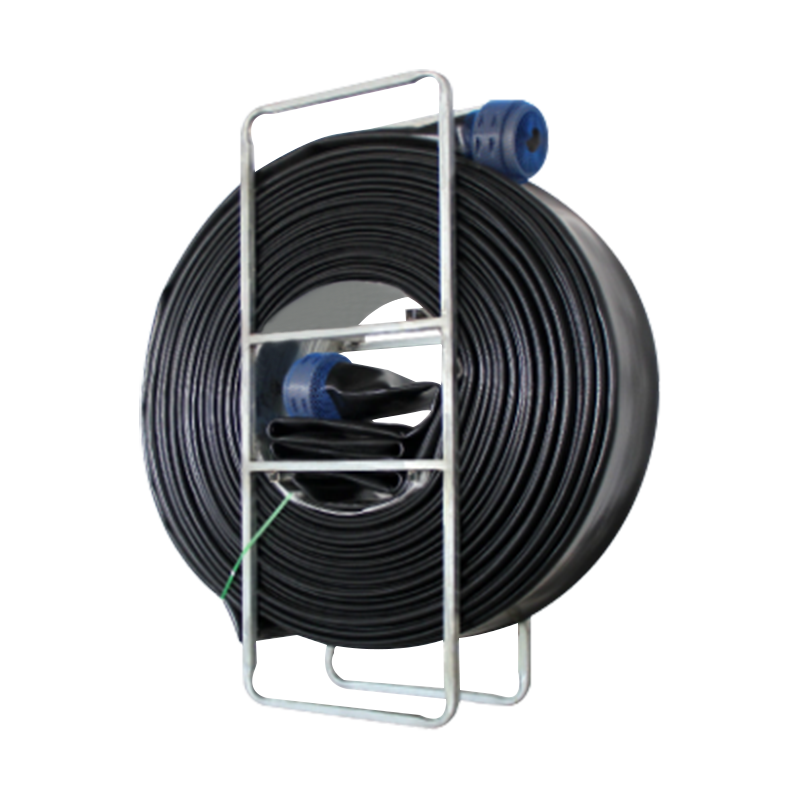Don't hesitate to send a message
Single jacket, EPDM rubber liner Features • 100% high tenacity polyester jacket, high-grade EPDM rub...
Pressure Rating and Construction:
Fracturing Hoses: Designed to withstand extremely high pressures, often exceeding 15,000 psi (103 MPa), with multiple layers of high-tensile steel wire braid or wire rope reinforcement to handle the high-pressure pulsation and vibration during hydraulic fracturing operations.
Ordinary Hydraulic Hoses: Typically rated for lower pressures, usually up to 5,000–10,000 psi (34–69 MPa), with fewer reinforcement layers, making them unsuitable for fracturing applications.
Material Composition:
Fracturing Hoses: Use highly wear-resistant and chemical-resistant inner liners (e.g., hydrogenated nitrile rubber, thermoplastic polyurethane) to withstand abrasive fracturing fluids (e.g., sand-laden fluids) and harsh chemicals. The outer cover is often made of weather-resistant synthetic rubber (e.g., chloroprene rubber) to protect against UV exposure and ozone.
Ordinary Hydraulic Hoses: Employ general-purpose rubber compounds (e.g., nitrile rubber) for the inner liner, which may not resist abrasion or chemicals as effectively.

Coupling Design:
Fracturing Hoses: Feature integral couplings or specialized high-pressure fittings (e.g., API 7K-compliant) that are crimped or vulcanized onto the hose to ensure leak-free connections under extreme pressure and vibration.
Ordinary Hydraulic Hoses: Typically use standard threaded or quick-connect couplings, which may not meet the pressure or durability requirements of fracturing operations.
Temperature Range:
Fracturing Hoses: Engineered to operate in a wider temperature range, often from -40°F to +250°F (-40°C to +121°C), to accommodate the environmental conditions of fracturing sites.
Ordinary Hydraulic Hoses: Generally rated for a narrower temperature range, typically -20°F to +180°F (-29°C to +82°C).
Compliance and Certifications:
Fracturing Hoses: Must comply with industry-specific standards such as API 7K, API 16C, or ISO 14693, which define performance requirements for high-pressure fluid transfer in oil and gas applications.
Ordinary Hydraulic Hoses: Adhere to general hydraulic hose standards like SAE J517 or EN 853, which do not address the extreme conditions of fracturing operations.
Application-Specific Features:
Fracturing Hoses: Incorporate features like anti-static layers, flame-resistant covers, or specialized armor (e.g., stainless steel) to protect against hazards such as hydrogen sulfide (H₂S) exposure or high-temperature environments.
Ordinary Hydraulic Hoses: Do not typically include these application-specific enhancements.

Single jacket, EPDM rubber liner Features • 100% high tenacity polyester jacket, high-grade EPDM rub...

Single jacket, TPU liner •High-tenacity polyester yarn, circular woven in twill weave/plain weave,T ...


Fire cabinets are designed to accommodate fire hose,valve and other firefighting equipment. Type 201...

Nitrile covered hose •Nitrile/TPR blend as cover and lining, with 100% high-tenacity polyester yarn ...

Single jacket, TPU liner •High-tenacity polyester yarn, circular woven in twill weave, TPU lining, f...

Marine hose Single jacket, PVC liner •100% high tenacity polyester yarn, circular woven in twill wea...

Marine hose Single jacket, PVC liner, PU coated •100% high tenacity polyester yarn,c ircular woven i...
 Call Us
Call Us
+86 159-5116-9511
 Need Support
Need Support
 Head Office
Head Office
No.58, Kechuang Road, Sixiang Street Medicine Gaoxin District Taizhou City, Jiangsu Province
Firefighting is a critical and complex operation, especially within industrial and marine environments. The proper tools and equipment are essential for containing and extinguishing fires efficiently....
Copyright © Taizhou Shenlong Fire Science and Technology Co., Ltd. All Rights Reserved.
 Fire Hose Manufacturers, Fire Hydrant Hose Factory
Fire Hose Manufacturers, Fire Hydrant Hose Factory
